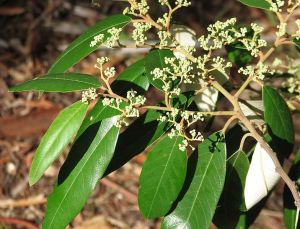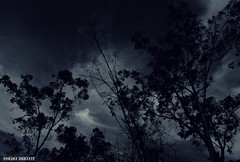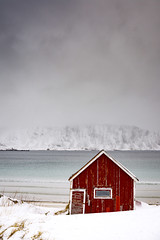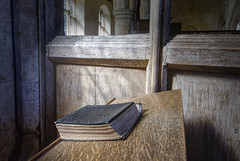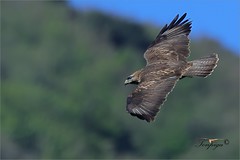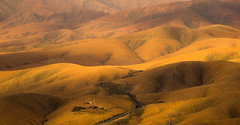Wild Stories is produced by

More workshops all the times!!
Come to visit Wild Stories on www.Facebook.com/WildStories for the latest workshops or join our mailing list>> www.weedyconnection.com
27 October> Foraging in the city
Naturalist Diego Bonetto will introduce you to the wonders and possibilities of edible weeds on a two-hour urban tour. To some plantain, dandelion, chickweed and sow-thistle are a nuisance, to others they are a delicious salad and a seasonal treat. Learn about the most common species growing in your garden, along the green belts and in parks and reserves. Find out how they have been used for food, craft and natural remedies. Discover ways to safely harvest from the urban 'wild' and enrich your diet with vitamins and minerals. Costs= $60/head with family discount tickets Where= Cooks River, Meet at Tempe Station Carpark on Richardson Crescent When= Saturday 27 Oct 10am>noon Bookings= http://www.trybooking.com/BUWW As part of the tour you will be issued with a limited edition and Sydney-specific foraging booklet to take home the knowledge acquired! Bring your camera and notebook, dress for the weather. This is a family, wheelchair and pet friendly walk. This event is offered as part of Crave Food Festival, see event listing here> http://cravesydney.com/event.php?intid=321928 October > Wild Chef Challenge
In the wilderness of Western Sydney great produce is uncovered. Join naturalist and forager Diego Bonetto as he provides ingredients for the Wild Chef challenge, gathering wild food for renowned restaurateurs who will transform them into a tasting. The informative tour will show how the common dandelion, mallow, nettle, fennel can be used in cooking. Sunday October 28 with Chef Nathan Sasi from EST. The Wild Challenge is on. This event is part of CRAVE Sydney Food Festival, see the festival listing's here> http://cravesydney.com/event.php?intid=3217 Costs= $110 per person When= Sunday 28, 10>2pm Bookings= http://www.trybooking.com/Booking/BookingEventSummary.aspx?eid=31691 this is a wheelchair, pet and family friendly event, drinks and foraging book provided. This event is supported by the Liverpool Council via its cultural facilities at Casula Powerhouse Arts Centre>> thanks Casula!3 November> Wild Edibles Walk
Join local artist and naturalist Diego Bonetto for a wonderful wild weedy walk along the Cooks River. Find out which local plants we can use as herbal remedies and eat as well as how to prepare and harvest them! This popular workshop will sell out fast so book soon! For details and bookings contact Michele: michele.margolis@gmail.com21 October > Foraging in the city
Naturalist Diego Bonetto will introduce you to the wonders and possibilities of edible weeds on a two-hour urban tour. To some plantain, dandelion, chickweed and sow-thistle are a nuisance, to others they are a delicious salad and a seasonal treat. Learn about the most common species growing in your garden, along the green belts and in parks and reserves. Find out how they have been used for food, craft and natural remedies. Discover ways to safely harvest from the urban 'wild' and enrich your diet with vitamins and minerals. Costs= $60/head with family discount tickets Where= Cooks River, Meet at Tempe Station Carpark on Richardson Crescent When= Sunday 21 Oct 10am>noon Bookings= http://www.trybooking.com/BUWW As part of the tour you will be issued with a limited edition and Sydney-specific foraging booklet to take home the knowledge acquired! Bring your camera and notebook, dress for the weather. This is a family, wheelchair and pet friendly walk. This event is offered as part of Crave Food Festival, see event listing here> http://cravesydney.com/event.php?intid=321920 October > Wild Chef Challenge
In the wilderness of Western Sydney great produce is uncovered. Join naturalist and forager Diego Bonetto as he provides ingredients for the Wild Chef challenge, gathering wild food for renowned restaurateurs who will transform them into a tasting. The informative tour will show how the common dandelion, mallow, nettle, fennel can be used in cooking. Saturday October 20 with Chef Karynne Ledger from Slow food Sydney; The Wild Challenge is on. This event is part of CRAVE Sydney Food Festival, see the festival listing's here> http://cravesydney.com/event.php?intid=3217 Costs= $110 per person When= Saturday 20, 10>2pm Bookings= http://www.trybooking.com/Booking/BookingEventSummary.aspx?eid=31691 this is a wheelchair, pet and family friendly event, drinks and foraging book provided. This event is supported by the Liverpool Council via its cultural facilities at Casula Powerhouse Arts Centre>> thanks Casula!13 October> Foraging in the city
Naturalist Diego Bonetto will introduce you to the wonders and possibilities of edible weeds on a two-hour urban tour. To some plantain, dandelion, chickweed and sow-thistle are a nuisance, to others they are a delicious salad and a seasonal treat. Learn about the most common species growing in your garden, along the green belts and in parks and reserves. Find out how they have been used for food, craft and natural remedies. Discover ways to safely harvest from the urban 'wild' and enrich your diet with vitamins and minerals. Costs= $60/head with family discount tickets Where= Cooks River, Meet at Tempe Station Carpark on Richardson Crescent When= Saturday 13 Oct 10am>noon Bookings= http://www.trybooking.com/BUWW As part of the tour you will be issued with a limited edition and Sydney-specific foraging booklet to take home the knowledge acquired! Bring your camera and notebook, dress for the weather. This is a family, wheelchair and pet friendly walk. This event is offered as part of Crave Food Festival, see event listing here> http://cravesydney.com/event.php?intid=3219October 7> Wild Chef Challenge
In the wilderness of Western Sydney great produce is uncovered. Join naturalist and forager Diego Bonetto as he provides ingredients for the Wild Chef challenge, gathering wild food for renowned restaurateurs who will transform them into a tasting. The informative tour will show how the common dandelion, mallow, nettle, fennel can be used in cooking. Sunday October 7 with Chef Luca Rossi and Sommelier Giorgio Di Maria, from 121BC; The Wild Challenge is on. This event is part of CRAVE Sydney Food Festival, see the festival listing's here> http://cravesydney.com/event.php?intid=3217 Costs= $110 per person When= Sunday 7, 10>2pm Bookings= http://www.trybooking.com/Booking/BookingEventSummary.aspx?eid=31691 this is a wheelchair, pet and family friendly event, drinks and foraging book provided. This event is supported by the Liverpool Council via its cultural facilities at Casula Powerhouse Arts Centre>> thanks Casula!6 October> Foraging in the city with Diego Bonetto.
Naturalist Diego Bonetto will introduce you to the wonders and possibilities of edible weeds on a two-hour urban tour. To some plantain, dandelion, chickweed and sow-thistle are a nuisance, to others they are a delicious salad and a seasonal treat. Learn about the most common species growing in your garden, along the green belts and in parks and reserves. Find out how they have been used for food, craft and natural remedies. Discover ways to safely harvest from the urban 'wild' and enrich your diet with vitamins and minerals. Costs= $60/head with family discount tickets Where= Cooks River, Meet at Tempe Station Carpark on Richardson Crescent When= Saturday 6 Oct 10am>noon Bookings= http://www.trybooking.com/BUWW As part of the tour you will be issued with a limited edition and Sydney-specific foraging booklet to take home the knowledge acquired! Bring your camera and notebook, dress for the weather. This is a family, wheelchair and pet friendly walk. This event is offered as part of Crave Food Festival, see event listing here> http://cravesydney.com/event.php?intid=321923 September 2012> Wild Medicine at your door step
Artist and expert forager Diego Bonetto will join forces with Agnieszka Kaczmarz-Adamczewska, biologist and herbalist, on a walking tour of the available medicinal flora at your doorsteps. You will learn how to recognize and how to prepare medicinal-quality remedies using dandelions, mallow, nettle, plantain and more. This is a family, pet and wheelchair friendly event. When: Saturday 22 Cost: $10 per person Where: Casula Powerhouse Art Centre (outside and in workshop room/cafe' facilities) Age group: 12+ For enquiries and bookings please contact Casula Powerhouse Arts Centre reception on 9824 1121 or go to the automated ticketing system at http://www.casulapowerhouse.com/booknow/25 August 2012 >> Wild Stories edible weeds walk
Join naturalist Diego Bonetto on a 2 hour urban tour along the Cooks River, learning the wonders and possibilities of edible weeds. Saturday 25 August 10-12pm easy stroll along the Cooks River, Inner west Sydney $20 per person, information and ticket here> http://www.trybooking.com/BTUL28 June 2012 >> Wild Beauty, soap making
Join Diego Bonetto and Lisa Norris on workshops in beauty, inspired by nature. Saturday 28 June | FREE 1pm–3pm, Casula Powerhouse Artist’s Studio Soap making workshop with expert soap maker Lisa Norris. Discover the healing properties of the common weed plantain, and make a bar of soap to take home. For enquiries and bookings please contact Casula Powerhouse Arts Centre reception on 9824 112129 June 2012 >> Wild Beauty> moisturizing cream workshop
Tired of your dull winter skin? Join Diego Bonetto and Lisa Norris on workshops in beauty, inspired by nature. Look no further than your own backyard to provide you with key natural ingredients for homemade skin care, facials and tinctures. Learn to prepare a simple moisturizing cream, using ingredients infused with the goodness of plantain and chickweed. Sunday 29 June | FREE 1pm–3pm, Casula Powerhouse Artist’s Studio During both workshops artist, forager, and keen naturalist, Diego Bonetto , will impart little known beauty secrets on home-brewed diuretics, skin purifiers and more! For enquiries and bookings please contact Casula Powerhouse Arts Centre reception on 9824 112128 April 2012 >> mushroom harvest
Sunday April 28 Mushroom Hunt #2 is booked out so we will offer another one for this Sunday, 22 April, a bit more expensive as we couldn't get the big bus for this one, but smaller crew (only 8 seats) which means MORE HARVEST. Book your ticket here> http://www.trybooking.com/24098images of Wild Stories
Category Archives: Craft
On How To Make Dandelion Infused Oil
This is a great introduction to making infused oils from your fresh herbs. Dandelion oil smells like summertime and is great for aching muscles and joints.
From about.com
Difficulty: Easy
Time Required: 30 minutes, then 2 weeks
Here’s How:
Pick one glass container full of dandelion blossoms.
Pour olive oil over blossoms until they are fully covered.
Using a wooden handle of a kitchen utensil, or a chopstick,
carefully poke the mixture to remove air bubbles.
Cover glass container with a breathable lid, such as a
coffee filter or woven cloth, held on with a rubber band.
Place in sun to steep for a minimum of 2 weeks.
Strain and keep in a cool, dark place.
What You Need
Glass container
Breathable lid, such as a coffee filter or woven cloth

